“When you can’t change the direction of the wind—adjust your sails.”—H. Jackson Brown, Jr.
There are things in life we cannot change. Death, taxes, weather, or the way the wind is blowing. But there are things we can change. Our attitude (those of you with teenage children just laughed, I know), our furniture arrangement, our clothes—you get the idea. But as the Serenity Prayer reminds us, we need to know what we cannot change and what we can change, and not only know which is which, but accept those things we cannot.
The H. Jackson Brown, Jr. quotation above tells us that sometimes “adjusting your sails” is the key to handling things in life. This means adjusting ourselves to the challenge at hand. But while a shift in perception can be powerful, there are times when it isn’t the wind or our attitude that is getting in the way—sometimes we encounter a hard block. A hard block might be wanting to go to the beach, but you live nowhere near a lake or ocean. Or a hard block might be thought of as the classic “trying to fit a square peg into a round hole.”
We want to bring this perspective to your structure and exercise. One of the things we cannot change is our anatomical structure. Short of going back and picking different parents or drastic surgical procedures, our structure is our structure. And, wow, is there variation from one of us to the next!
Today, I want to focus on one particular area of our anatomical structure and the impact of variations. I am going to suggest a way to individualize foot position for symmetrical stance exercise (swings, squats, etc.) because sometimes we need to “adjust our sails.”
Why Not Adjusting Our Sails Can Mean Failure
Because we tend to follow rules or because our perception of what we “should” be doing is set in a particular direction, we can all end up trying to fit that square peg into a round hole. I know I did in the past. My hip structure has a high alpha angle (a measure of when the femoral head changes shape—anything over 49 degrees is considered clinically significant). This structural reality means I should adjust my sail—I mean, stance—to accommodate. (For more detail, read the article I wrote for Functional Movement Systems entitled Why Movement Screening and Exercise Play by Different Rules.)
The problem with not stopping to adjust our sails is that we can unknowingly be persisting in movements that may eventually cause us issues. With the hips in particular, two things can happen pretty easily when we fight our structure:
- Damage to the hip. A 2004 study published in Clinical Orthopaedics & Related Research, demonstrated that 87% of hip labrum tears were associated with at least one structural anomaly and a 2008 study published in Current Reviews in Musculoskeletal Medicine found that up to 74% of people with a labrum tear did not display a clear mechanism of how their hip was hurt. But as I laid out in my FMS article and has been well reported in many studies, findings on imaging do not necessarily correlate with pain and injury. What imaging did for me was confirm my structure and allow me to adjust to it instead of fighting it.
- When the hip stops the back starts. As Dr. Stu McGill has discussed, when your hip cannot go beyond a certain range due to a structural block, your body will likely make up the difference from another area—and the lower back is a frequent victim.
Given this information, what we want to do is optimize hip motion to enhance spine stability. Enter the Lock and Rock.
How to Do the Lock and Rock
- Begin standing in a symmetrical stance with the feet about hip width apart and feet facing pretty straight ahead.
- “Lock” the glutes in (squeeze the cheeks as hard as you can) and unweight the front of the foot (the “rock”) so your foot can spin/turn out on the heel.
- It is critical here that you allow your feet to turn out as much as they want to. Being in socks on a hard wood floor or on a slide board with booties on are ways to make sure the feet turn out as they wish to.
Take a moment to go do this.
How far did your feet turn out? Ten degrees? Twenty degrees? Did they both turn out the same amount? If one foot turns out further, I recommend first trying to match your feet to the greater degree of out-turn. See if that works for you. You may wind up with slightly different foot positions in your left and right foot.
Once you determine this stance, try it in your kettlebell deadlift and see if you are able to achieve the kettlebell deadlift position more easily. Groove the new stance in the deadlift, and then try it in your swing and squat. Are you able to keep your spine in position better or get deeper? Take a video of yourself or have a training partner watch you so you can analyze your positions.
Adjusting the foot position so the hips “set the feet” allows you to have the best chance to optimize your hip motion. Being able to efficiently move from the hips should make it easier to hip hinge and squat with better spine position and strength/power. If you or a student struggle to find the bottom position of the deadlift or squat with a stable spine, try individualizing the foot position to see if it gets you out of trying to fit the square peg in the round hole.
Individualize Your Sails
I always used an out-turn in my stance and only ran into problems when I started going away from this natural out-turn and doing what I thought I “should” be doing according to some people’s version of the rules.
The reality of using the out-turn is the need to stretch the hip so we don’t get “stuck” in the out-turn (as much as our structure will allow us to stretch away from this). Therefore, kettlebell windmills and the 90/90 stretch from Simple & Sinister can be important tools. While we can’t change our structure we can “move with it” and try to achieve as much of a balanced ability to move by individualizing the foot position but also being mindful of “doing the opposite” to balance out the movements as much as possible. The idea of balancing out pressing work with rowing or pulling work is a good analogy here.
Give the Lock and Rock a try to see if individualizing your foot position to “fit” your hips assists you in better symmetrical stance exercise. As always, if using a new technique causes any issues at all you should stop and work with a healthcare practitioner (especially in the case of pain) to evaluate your hip(s).
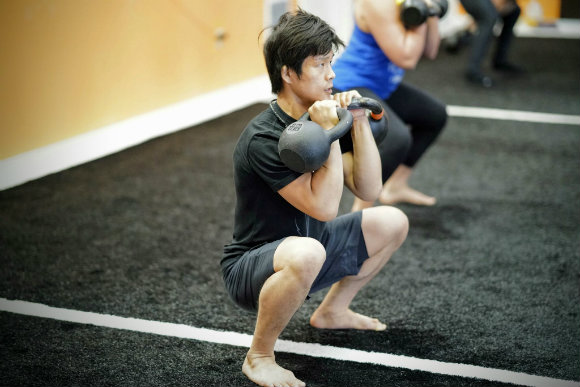

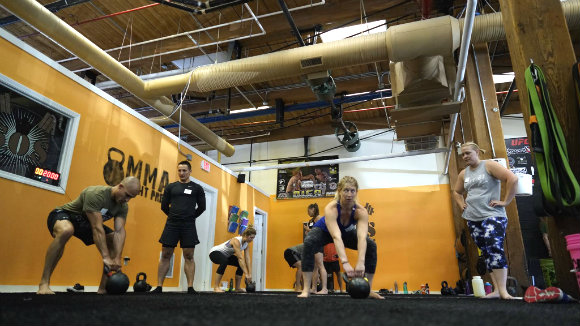
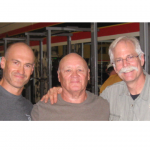
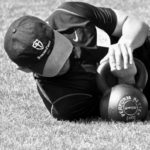
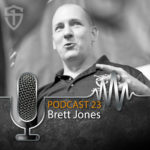
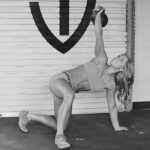




Brett, in looking thru the categories i came across this article. I have adapted the “lock and rock” to my kb work and found an untapped supply of power/freedom of movement. But the real kicker for me happened one day on the golf course. I went into the round using this idea to settle into my stance for each shot, not only did i find more distance with each club, the reduction in tension thru the swing motion was tremendous. A great example i think of the WTH effect. Thanks.
Cool.
Brett,
Thank you very much for posting this article and video. I’ve suffered from hip impingements in the past and I’m well aware that I have to use a slightly asymmetrical, toes-out stance in order to remain pain free.
This ‘lock and rock’ method is a great way to find my own ‘sweet spot’!
Regards,
Mike.
This is a great article. I’ve been working with a few coaches and they continue to reference bringing my feet in closer, however this has never really felt correctfor my hips. I have been feeling quite a bit of what feels like joint compression when getting into my deadlifts.
I feel this article came at the perfect time as I was needing to really start making some adjustments here.
I’m anxious to see how this will help my hinge and my hips! Thanks Brett!
Kevin
Keep me posted and hope this does help
Awesome article Brett! After doing the lock and rock I was surprised at just how far my feet externally rotate, almost 25 degrees. Should I infer that this means I have high alpha angle as well? If so is there anything else in regards to stance affected by a high alpha angle?
Mike
We can’t say that based off of the “lock and rock”.
I would just say that it is a good starting point for you and your hips.
Hello Brett. EXCELLENT article! Wow we are always learning new things! As subtle as this may seem this plays huge factor in lower back injuries as well. Thank you for this AWESOME educational article my friend!
Thank you Christian